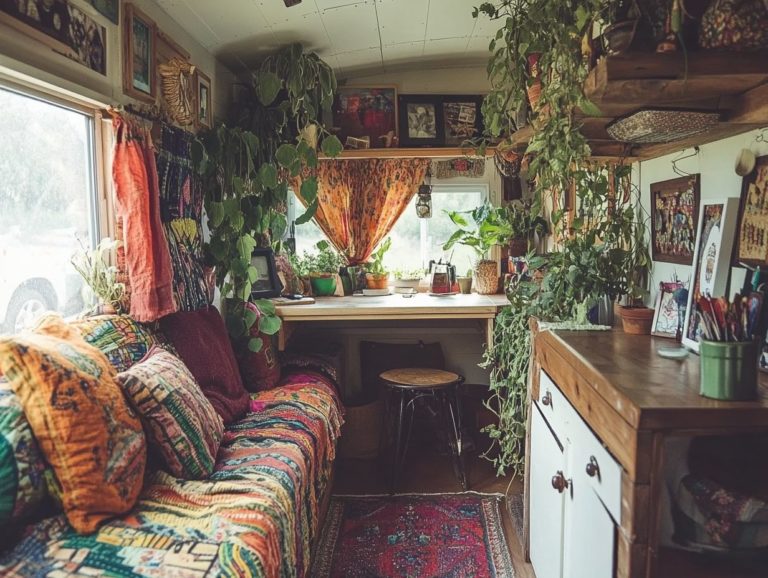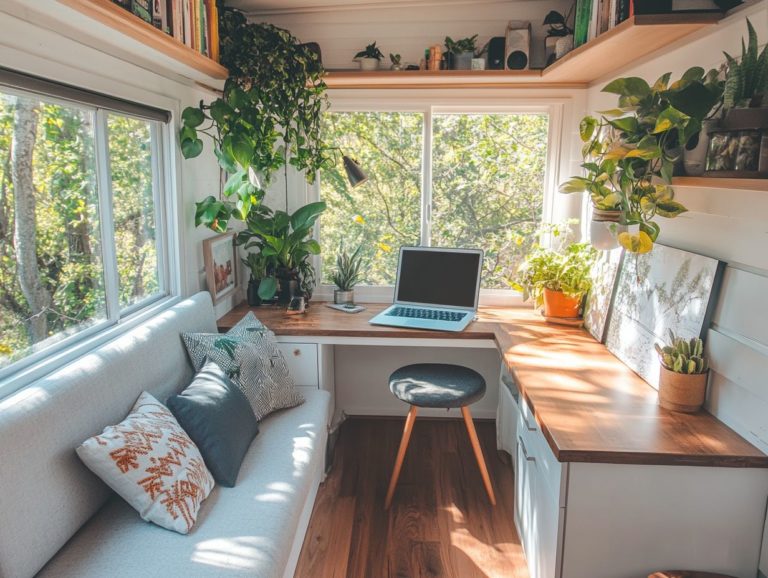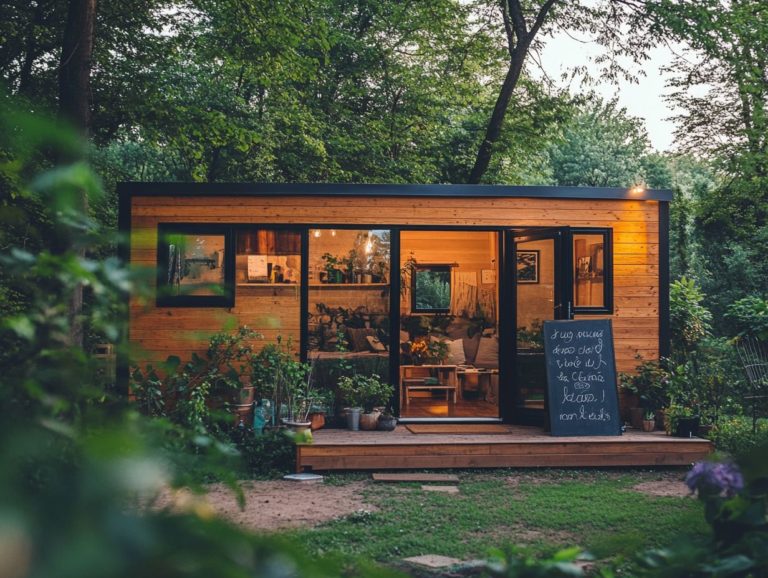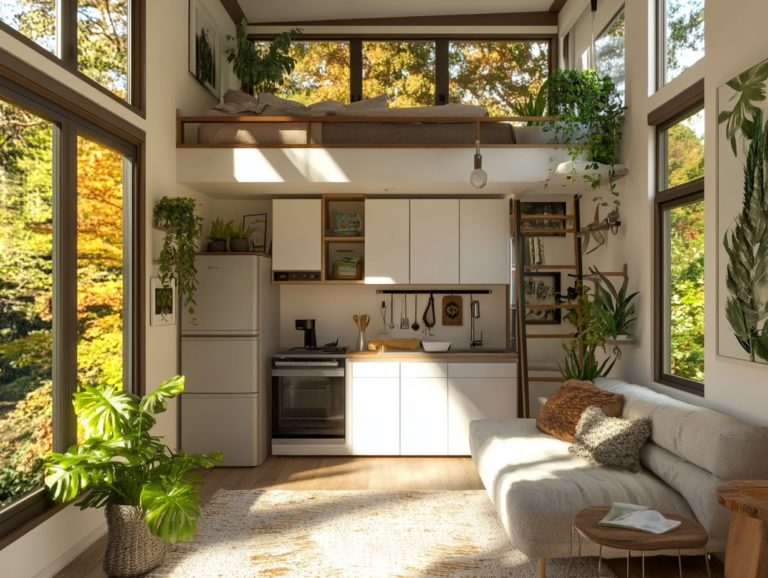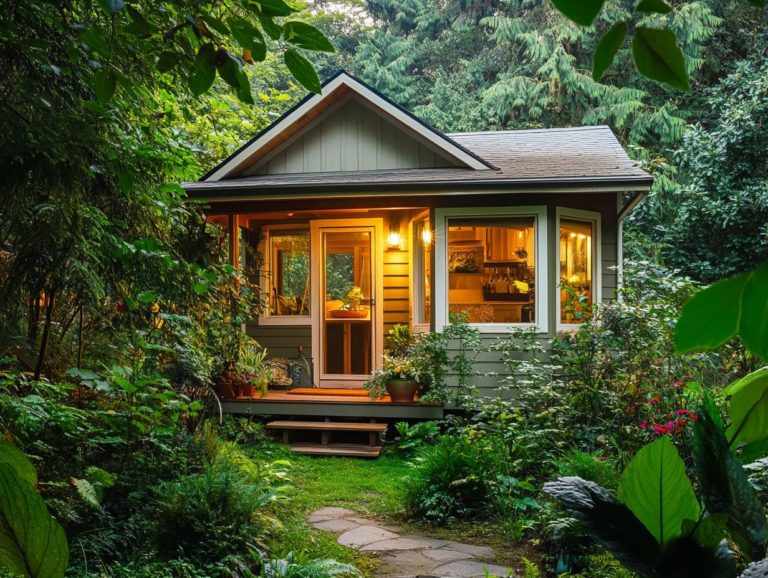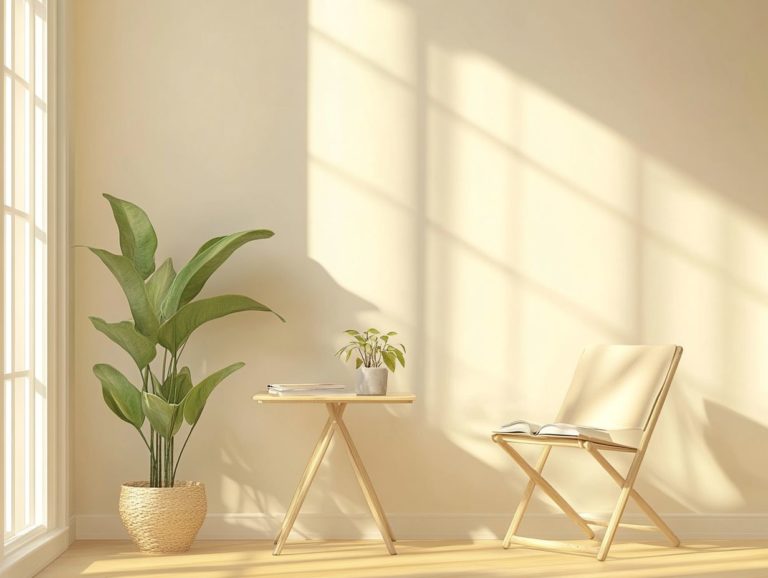Living Large in a Tiny Space
As the trend of tiny living continues to gain traction, you may uncover the joys and advantages of downsizing.
This article delves into the myriad benefits of residing in a compact space, from significant financial savings to a lighter environmental footprint.
It will guide you through designing your own tiny home to maximize functionality while addressing common challenges such as storage and privacy.
You ll also discover inspiring stories from individuals who have wholeheartedly embraced this minimalist lifestyle.
Is tiny living the perfect fit for you? Let s explore!
Contents [hide]
- Key Takeaways:
- Benefits of Living in a Tiny Space
- Designing and Organizing a Tiny Space
- Overcoming Challenges of Tiny Living
- Is Tiny Living Right for You?
- Real Life Examples of Successful Tiny Living
- Frequently Asked Questions
- How can I make the most of a small living space?
- What are some creative storage ideas for small apartments?
- How can I decorate a small living space to make it feel larger?
- Are there any benefits to living in a tiny space?
- How can I personalize a small living space?
- What furniture should I prioritize in a tiny house?
Key Takeaways:
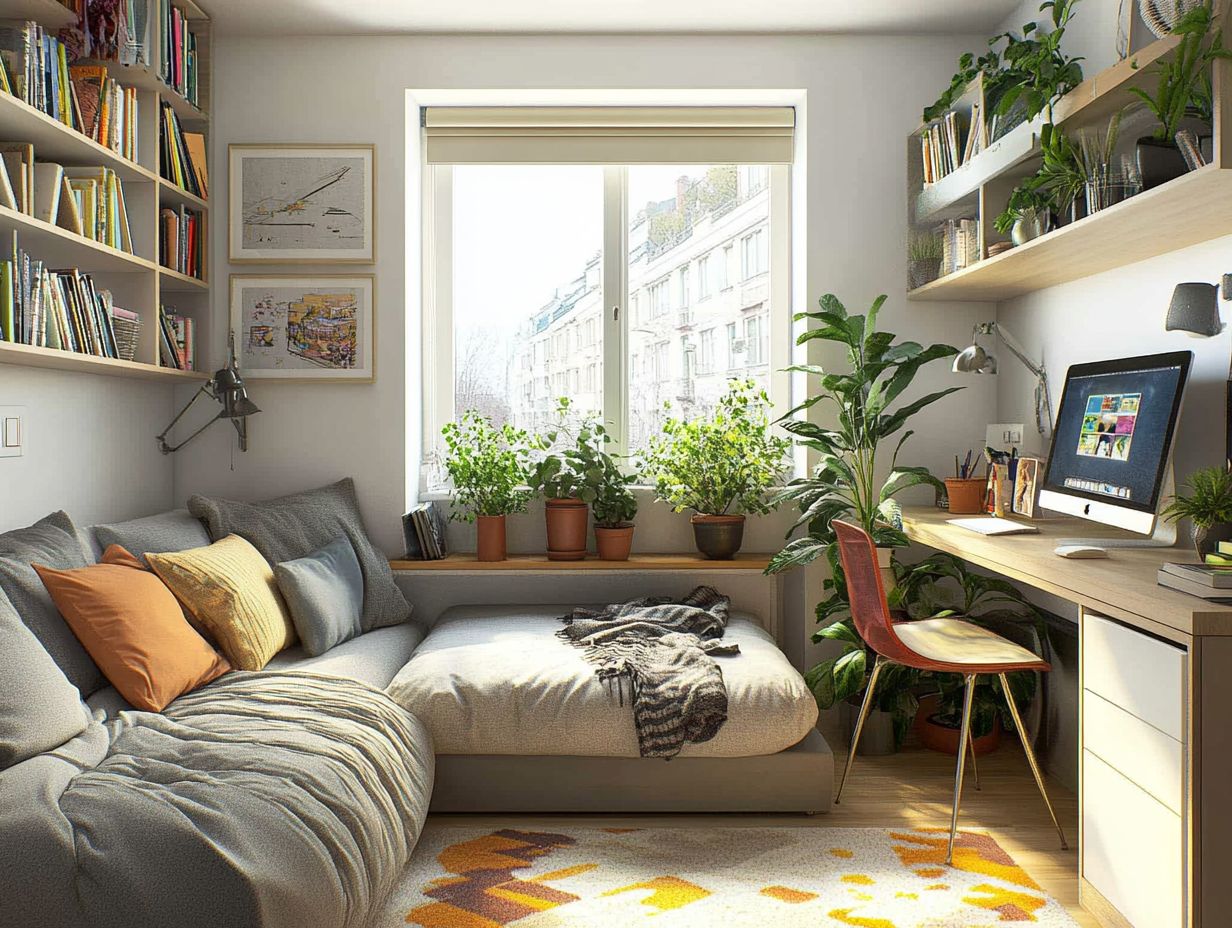
- Living in a tiny space brings financial and environmental benefits, such as reduced living expenses and a smaller carbon footprint.
- Maximizing space and functionality is key when designing and organizing a tiny space.
- Before deciding if tiny living is right for you, consider factors such as available space, storage needs, and privacy concerns.
Defining the Concept
The concept of tiny living invites you to embrace living large within a small space, often realized through tiny houses that blend functionality with aesthetic appeal.
This movement is gaining popularity as people find new ways to optimize their space and live minimally.
By focusing on smart ways to use your space, tiny living simplifies daily routines and fosters a deeper connection to your surroundings.
Modern tiny houses, featuring smart design choices, offer versatile layouts that transform a small room into a multifunctional haven, accommodating various needs without feeling cramped.
This movement inspires you to rethink priorities, placing experiences above material possessions. Many are realizing that living large isn’t about square footage; it’s about crafting a personalized sanctuary that nurtures peace, ignites creativity, and champions sustainability.
Benefits of Living in a Tiny Space
Living in a tiny space presents a wealth of advantages. Smaller homes often lead to significant financial benefits, including lower costs for utilities and maintenance.
Embracing a compact lifestyle helps you reduce your carbon footprint, promoting sustainable living practices that positively impact the environment.
Financial and Environmental Advantages
The financial benefits of tiny living are hard to overlook. With lower mortgage payments, reduced utility costs, and minimal maintenance, you can cultivate a more manageable financial lifestyle.
Your ecological footprint shrinks, allowing you to embrace sustainable practices that promote greener living.
By choosing a tiny house, you’ll significantly cut down on monthly expenses, offering a liberating approach to budgeting and spending. This shift not only saves you money; it puts you on the fast track to a sustainable, energy-efficient lifestyle!
The compact design of tiny homes typically requires fewer materials for construction, aligning perfectly with sustainable building practices. As more individuals realize that living large isn’t measured by square footage but by experiences and freedom, the appeal of tiny houses continues to grow, championing both cost-effective solutions and eco-friendly living.
Designing and Organizing a Tiny Space
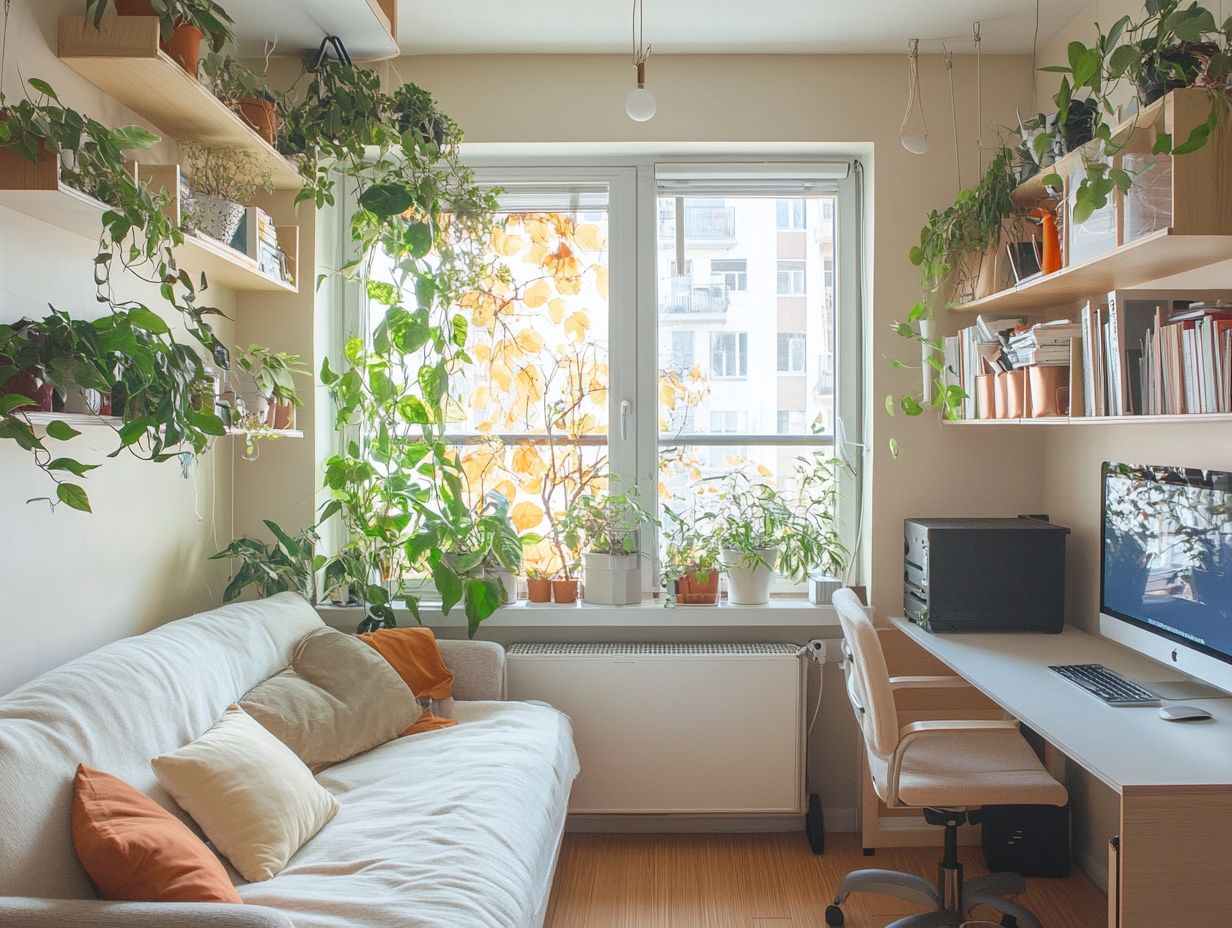
Designing and organizing a small space requires a distinctive approach that maximizes functionality while maintaining style.
You can transform your home into an inviting sanctuary by carefully considering furniture layout, selecting an appealing color palette, and incorporating creative decor ideas that elevate your living area.
This thoughtful strategy allows you to create an environment that feels both practical and aesthetically pleasing.
Ready to embrace tiny living? Start your journey today!
Maximizing Space and Functionality
Maximizing space and functionality in your tiny home calls for creative ways to store things and effective decluttering strategies. These not only enhance livability but also create the illusion of negative space, promoting a sense of openness and comfort.
By incorporating multi-purpose furniture this is furniture that serves more than one function, like a bed that can also be a sofa you can make the most of every inch of your small living area.
Consider clever shelving units that reach toward the ceiling. These not only draw the eye upward, enhancing the perception of height, but also provide ample space for books and decorative items.
Implementing a regular decluttering strategy will help you prevent unwanted items from piling up. This ensures that each piece in your room serves a purpose. Keeping things tidy makes your home feel welcoming and contributes to a more harmonious and inviting space.
Overcoming Challenges of Tiny Living
Overcoming the challenges of tiny living often requires you to tackle common issues like limited storage and privacy concerns. By embracing creative design and smart organization, you can transform your small space into a haven of comfort and functionality.
Addressing Limited Storage and Privacy Concerns
Addressing limited storage and privacy concerns in tiny living requires innovative space organization techniques. These techniques allow you to maximize every inch of available area. By cleverly hiding storage, you can ensure that your personal spaces remain comfortable and feel secluded.
One effective method is to incorporate hidden compartments beneath furniture, such as beds or benches. These can serve as discreet storage for seasonal items or belongings you don’t use every day.
Utilizing vertical storage solutions, like wall-mounted shelves and pegboards, can significantly free up your floor space while keeping essentials readily accessible. To enhance your privacy, consider installing sliding doors or curtains that separate living areas. This creates a sense of seclusion without permanently partitioning the space.
Strategies like these not only optimize your organization but also contribute to a calm atmosphere. They help you mitigate overwhelming feelings that often accompany living in smaller environments.
Is Tiny Living Right for You?
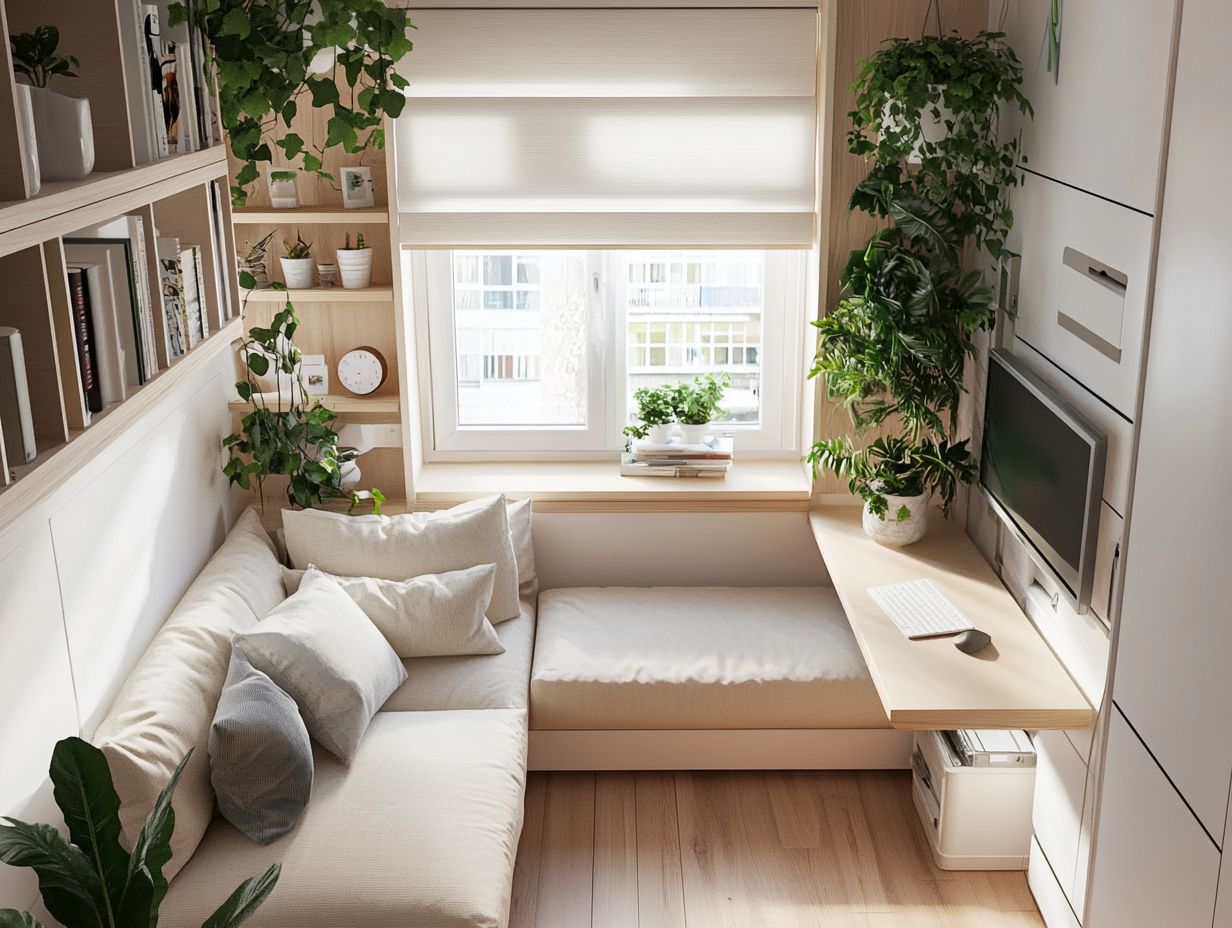
Determining if tiny living is the right fit for you requires a thoughtful evaluation of several factors. Consider your lifestyle choices, your affinity for cozy spaces, and your readiness to embrace a minimalist approach that prioritizes quality of life while minimizing clutter.
Factors to Consider Before Making the Move
Before you make the leap into tiny living, it s crucial to consider several key factors:
- Financial implications
- Personal lifestyle choices
- Ability to adapt to a more compact way of life
You need to assess your financial readiness by calculating the costs of purchasing or renting a tiny home. Don’t forget to factor in ongoing expenses like utilities and maintenance. Family dynamics are equally important; take time to evaluate how a smaller space might impact your relationships and daily interactions. This foresight can help you avoid potential conflicts down the line.
Don t overlook how this downsizing will affect your daily routines. Will there be enough room for your hobbies, remote work, or family activities? Thoughtful planning is essential, as this transition can be transformative. It offers a simpler lifestyle but still demands adequate preparation and compromise.
Real Life Examples of Successful Tiny Living
Real-life examples of successful tiny living are all around you. They illustrate the profound impact of the tiny house movement on individuals and families who have wholeheartedly embraced this alternative lifestyle.
You ll find a treasure trove of inspiring stories on platforms like YouTube, particularly from channels such as Living Big in a Tiny House and creators like Tumbleweed Tiny Homes. These narratives not only capture the essence of tiny living, but they also inspire others to consider making the leap into a more minimalist way of life.
Ready to embrace a simpler life? Explore tiny living today!
Inspiring Stories and Tips from Tiny Homeowners
Inspiring stories from tiny homeowners showcase the diverse experiences and inventive solutions they ve employed to tackle the challenges of tiny living. These stories can inspire you to make your tiny living journey smoother and more enjoyable!
Often accompanied by invaluable tips from experts like Tumbleweed Tiny Homes, you’ll find practical insights and clever design hacks that demonstrate how individuals have maximized every square inch of their compact spaces. For instance, in a guide on making the most of vertical space in tiny houses, one homeowner transformed a closet into a cozy reading nook, proving that with a touch of creativity, even the smallest corners can deliver comfort and utility.
Others highlight the significance of furniture that serves more than one purpose and smart storage ideas—think sofas that can turn into beds or fold-out tables. This showcases how adaptability is essential in tiny living. Through these stories, you can draw inspiration to conquer your own challenges while crafting a personalized and efficient lifestyle in a modern tiny house, utilizing smart design solutions for tiny house living.
Frequently Asked Questions
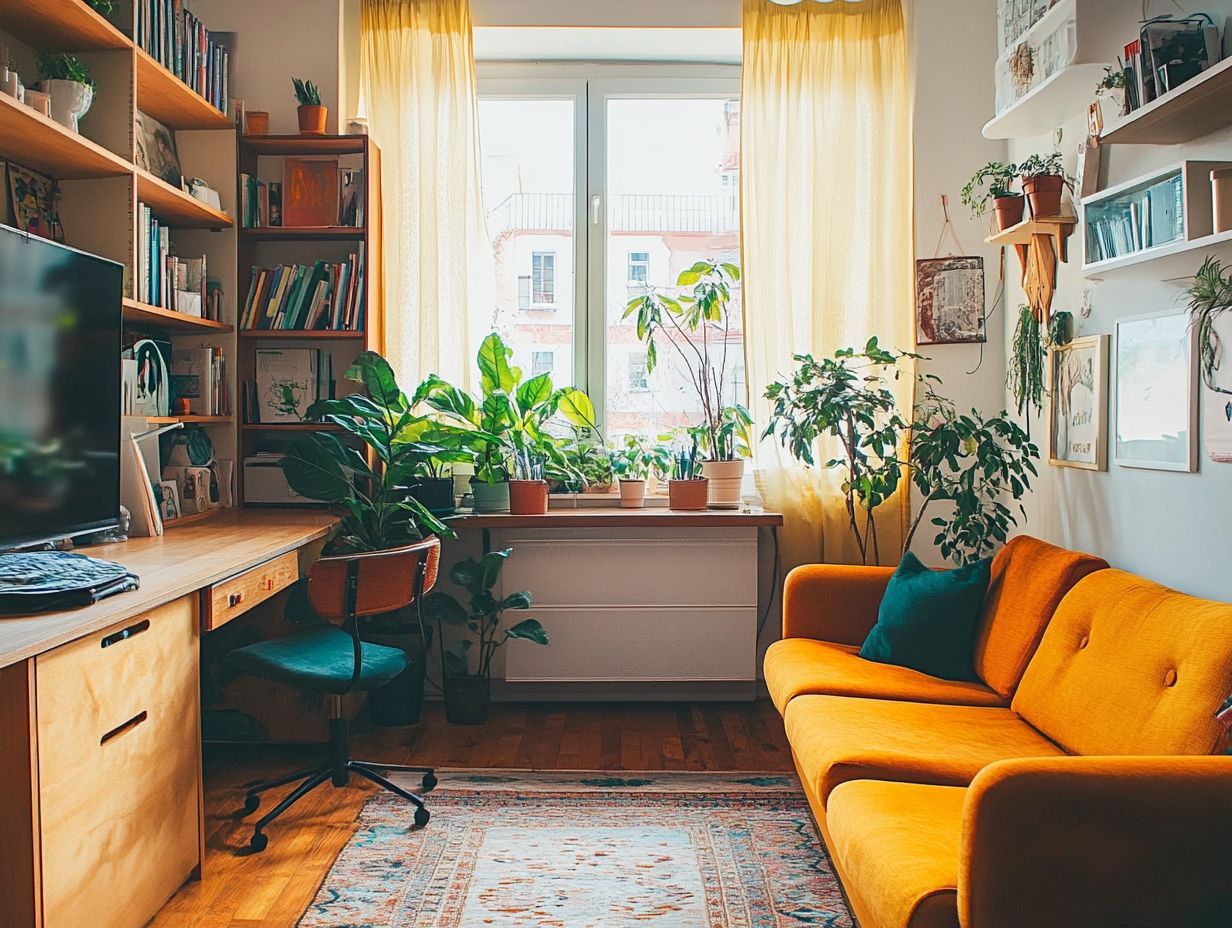
How can I make the most of a small living space?
There are several ways to maximize space in a tiny living area. You can utilize multi-functional furniture, such as a sofa that doubles as a bed, or invest in storage solutions like under-bed containers or hanging organizers.
What are some creative storage ideas for small apartments?
- Using wall shelves
- Utilizing the space under stairs
- Using magnetic strips to store kitchen utensils
- Repurposing items, such as using a hanging shoe organizer for small items
How can I decorate a small living space to make it feel larger?
There are a few tricks you can use to create the illusion of a larger space. Using light walls and furniture can make a room feel more open, as well as incorporating mirrors to reflect light.
Keeping the space decluttered can also make it feel more spacious.
Are there any benefits to living in a tiny space?
Living in a tiny space can have several advantages, such as lower living expenses, less time spent cleaning and maintaining the space, and a smaller carbon footprint. It can also encourage a simpler, more minimalist lifestyle that aligns with the Tiny House Movement, which promotes sustainable living.
How can I personalize a small living space?
There are many ways to add personal touches to a tiny living space, including accent decor that reflects your color palette. You can incorporate photos or artwork on the walls, choose unique accent pieces that enhance your decor, and add color and texture through pillows, blankets, and rugs.
You can also display collections or souvenirs in a creative way.
What furniture should I prioritize in a tiny house?
In a tiny living space, it’s essential to prioritize multi-functional furniture and items that serve multiple purposes. This can include a sleeper sofa, a coffee table with storage, and a folding dining table.
It’s also important to choose furniture that fits the scale of the space and doesn’t overwhelm it.

